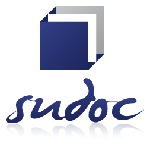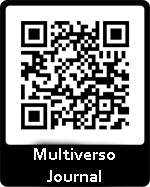Peer review
Peer Review Process
The journal uses the double-blind peer review system to ensure the quality of the works published. The submitted works are subjected to the consideration of qualified reviewers, who issue an impartial judgment on the quality, relevance, and originality of the work.
Once the editor and the Editorial Committee receive the article, the author will immediately be notified of its reception to follow up on the process. The article will be received through the journal's OJS platform or via email at multiversojournal@gmail.com, and the review or evaluation of the article and its publication will proceed in three phases or moments:
Phase 1: Internal review or pre-review, within two (2) weeks. The correspondence between citations and references, the thematic compatibility of the article with the different sections of the journal, and plagiarism control through Turnitin's Similarity Check will be verified. The author will be informed about the acceptance or rejection to continue in the arbitration process.
Phase 2: External review, within four (4) weeks, by including two external peers (national or international) as evaluators of the article under the double-blind modality. In case of disagreement in the evaluation, a third evaluator will be assigned to resolve the disagreements. These specialists will make observations and issue a judgment in terms of: (a) Accepted for publication, (b) Accepted with the fulfillment of corrections, or (c) Not accepted for publication.
The arbitration process takes into account the following criteria: a) Mastery of knowledge evidenced; b) Scientific rigor; c) Theoretical and methodological foundation; d) Timeliness and relevance of the sources consulted; e) Contributions to existing knowledge; f) Quality of writing and appropriate use of grammatical norms, according to the language being used (English or Spanish).
The format used by the reviewers to evaluate the articles includes two major parameters: Formal presentation criteria and content criteria, which will be evaluated on a scale that expresses the values: EXCELLENT, VERY GOOD, GOOD, FAIR, POOR.
Formal presentation criteria: 1) Originality, relevance, and appropriate length of the title; 2) Clarity and coherence of the discourse; 3) Proper elaboration of the abstract: Objective, methodology, results, and keywords; 4) Internal organization of the text.
Content criteria: 1) Mastery of knowledge evidenced; 2) Scientific rigor; 3) Theoretical and methodological foundation; 4) Timeliness and relevance of the sources consulted; 5) Contributions to existing knowledge.
Once the article has been arbitrated, the publication judgment will be communicated via email to the corresponding author. In case corrections are required to the article (Accepted with the fulfillment of corrections), the author(s) will have a maximum of 10 days to make the corrections (this period is part of the 4 weeks of Phase 2), and must send a new version of the document and a letter in which they respond to each of the suggestions/observations made by the reviewers. It is the authors' responsibility to comply with all the suggestions and recommendations sent; if there are disagreements, they must inform and argue their position. The editor decides if the modified article is sent again to the same reviewers for final approval. Once the comments, judgments, or corrections are received, the editor together with the Editorial Committee, will make the final decision of Accepted for Publication or Not Accepted, depending on the case.
If the article is Accepted for publication (without corrections or minimal corrections), the authors must comply with the delivery of: (a) a letter informing that the suggestions provided by the reviewers were included in case there are any; (b) the final versions of the article in Spanish or English, according to the authors' preference; (c) an authorization for the Editorial Committee of the journal to reproduce the text with the authors' signatures; and (d) the identification data of the authors for the journal's respective database (ORCID ID code, full names, and email address).
In any case, the editor and the Editorial Committee reserve the right to accept or reject the articles. Rejected articles (Not Accepted for Publication) will be notified to their authors via email. The acceptance of the article for publication implies the transfer of reproduction and dissemination rights by any means to the journal.
Phase 3: Once the article is accepted, the final editing and layout process begins, within three (3) weeks, through the following process: (a) submission by the editor of the accepted material for publication, (b) style correction in Spanish and/or English when required, (c) sending the material with corrections to the editor to be forwarded to the authors, (d) submission of the verified material with suggestions by the authors, so that the editor can send it again to the publisher, (e) layout and typesetting of the material, which is also sent to the authors through the editor; DOI assignment, and (f) publication of the material in electronic format on the journal's platform or website.


















